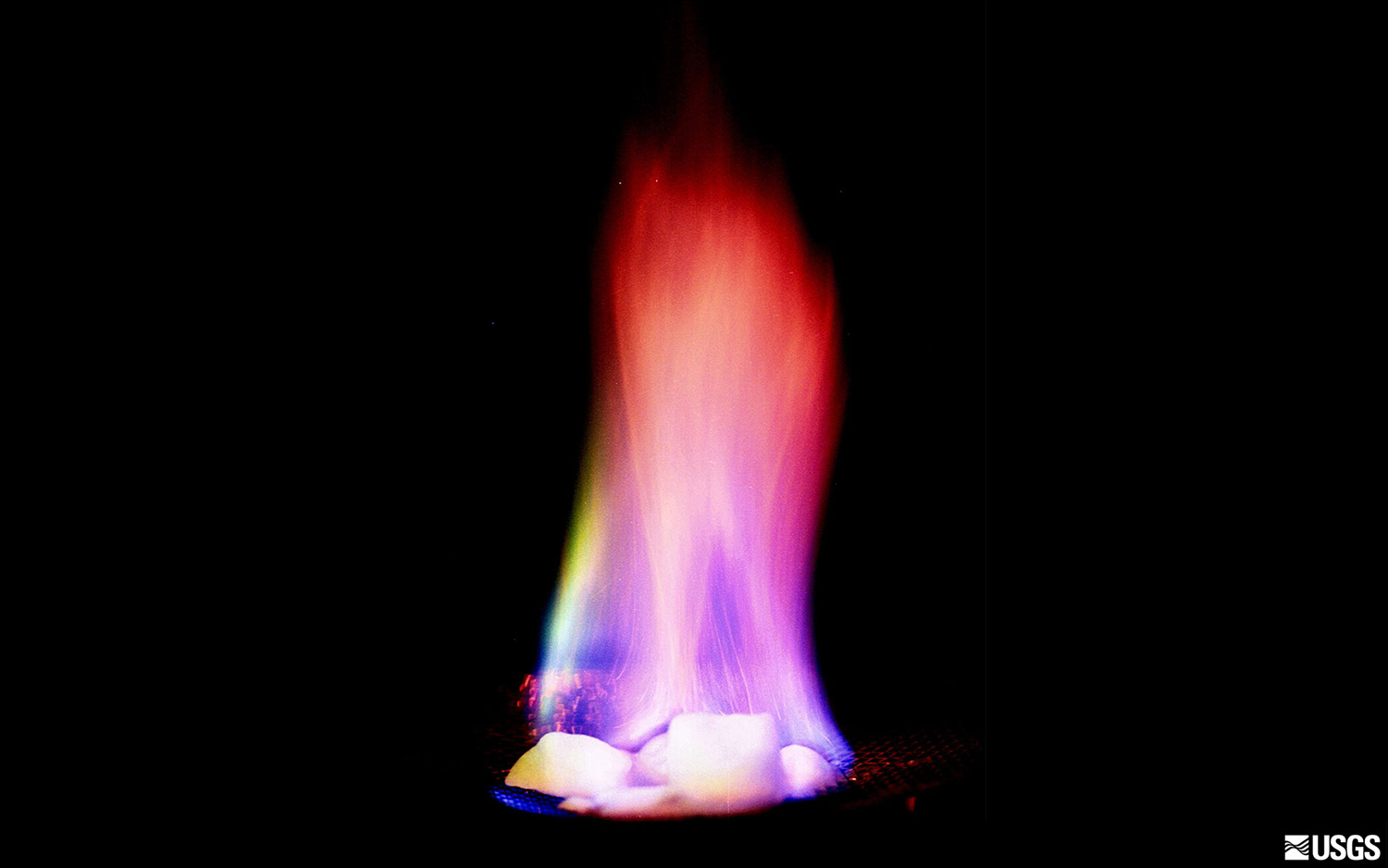Scientists Solve the Molecular Puzzle of 'Flammable Ice'

Scientists have solved a molecular puzzle explaining the natural formation of gas hydrates, a type of flammable crystal also known as "the ice that burns."
Gas hydrates form when pockets of gas are locked in a cage of ice molecules. They form deep underground, mostly beneath the ocean floor but in some cases under permafrost, under high pressure and extreme cold according to the U.S. Geological Survey (USGS). If the hydrates decomposed, they would release the caged gas — a natural gas that would burn if exposed to a flame.
And though this flammable ice is widespread in clay-rich ocean sediments surrounding the continents, little was known about how it formed in minerals in these sediments. That's because the minerals' saltiness and pore size were thought to hinder gas hydrates from taking shape.
So, Taehyung Park and Tae-Hyuk Kwon, of the Korea Advanced Institute of Science and Technology, set out to investigate these conditions, according to a new study.
To do so, the researchers simulated this initial formation of gas hydrates, called gas hydrate nucleation, by applying an electric field to those clay-rich oceanic sediments.
Their research gave them new insights into this burning question, revealing the interactions in the clay that allow flammable ice crystals to emerge, the study authors wrote. [Greenhouse Gas Emissions: Causes & Sources]
"We found that gas hydrate nucleation is remarkably enhanced by surface charge on clay minerals," Park told Live Science in an email.
Sign up for the Live Science daily newsletter now
Get the world’s most fascinating discoveries delivered straight to your inbox.
Since clay minerals are negatively charged, their electrochemical interaction with water is what sparks gas-hydrate formation, the study authors reported.
Gas hydrates, which are mostly made up of methane hydrate, were discovered in the late 19th century, and for decades, they were merely seen as a pesky byproduct that accumulated in pipelines and obstructed the flow of oil and gas, according to the USGS. Since the 1980s, gas hydrates have generated keen interest worldwide as a potential energy source.
Gas-hydrate reservoirs are thought to hold energy stores surpassing the potential energy output of all the coal, oil and gas in the world, and plans by the U.S. government to unlock these reserves have been lauded as capable of reducing the price of natural gas by as much as 30 percent, Live Science previously reported.
But the deposits, though widespread, are difficult to find; unlike gas and oil, gas hydrates are not concentrated in one area, making them a challenge to identify and extract.
In addition, extracting this combustible energy source could carry the risk of releasing stored greenhouse gases on an enormous scale, potentially accelerating the pace of human-induced climate change.
Understanding the link between clay minerals and gas hydrates will likely play a vital part in efforts to extract methane from hydrate deposits, and could even inform investigations into using ocean sediments for carbon dioxide storage, the scientists reported.
The findings were published online Feb. 8 in the journal Environmental Science and Technology.
Original article on Live Science.

Mindy Weisberger is an editor at Scholastic and a former Live Science channel editor and senior writer. She has reported on general science, covering climate change, paleontology, biology and space. Mindy studied film at Columbia University; prior to Live Science she produced, wrote and directed media for the American Museum of Natural History in New York City. Her videos about dinosaurs, astrophysics, biodiversity and evolution appear in museums and science centers worldwide, earning awards such as the CINE Golden Eagle and the Communicator Award of Excellence. Her writing has also appeared in Scientific American, The Washington Post and How It Works Magazine. Her book "Rise of the Zombie Bugs: The Surprising Science of Parasitic Mind Control" will be published in spring 2025 by Johns Hopkins University Press.









